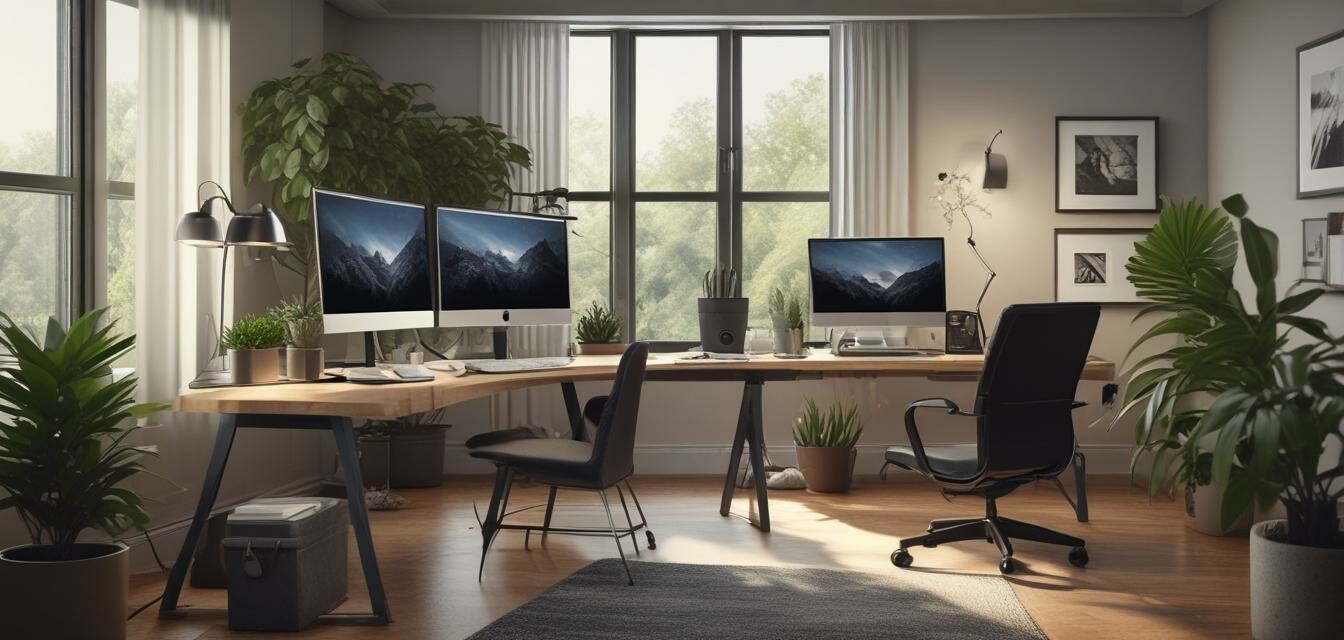
Designing a Collaborative Home Office Space
Key Takeaways
- Balance collaboration and privacy in your workspace.
- Utilize multifunctional furniture to optimize space.
- Incorporate technology that facilitates teamwork.
- Create designated zones for different tasks.
- Enhance the atmosphere with plants and lighting.
In today's remote work environment, designing a collaborative home office space has become more important than ever. A well-designed workspace can boost team morale while ensuring individual productivity. This article will provide practical tips for creating a home office that encourages teamwork without sacrificing personal focus.
Understanding the purpose of a collaborative space
A collaborative workspace is essential for teams that rely on open communication and cooperative problem-solving. However, balancing these needs with the necessity for privacy can be a challenge. Below are some key elements to consider when designing your collaborative home office.
Key elements of collaborative home office design
- Defined work zones: Separate areas for focused work and teamwork help to manage distractions.
- Access to tools: Ensure that all team members have access to the hardware and software they need.
- Comfortable furniture: Invest in ergonomic chairs and desks that support prolonged use.
- Good lighting: Natural and artificial lighting significantly impacts mood and productivity.
Ways to create collaboration and efficiency
| Aspect | Collaborative Features | Privacy Features |
|---|---|---|
| Design layout | Open areas to promote interaction and brainstorming | Partitions or screens to reduce noise |
| Technology | Shared software tools (like project management software) | Personal devices for focused tasks |
| Furniture | Multi-use desks for meetings | Private workstations for uninterrupted focus |
Multifunctional furniture solutions
Using furniture that serves multiple purposes can significantly enhance the utility of a home office while saving space. Here are a few suggestions:
- Desks with adjustable heights: Allow for both sitting and standing options.
- Bookshelves with built-in desks: Create a designated workspace in minimal area.
- Modular seating: Rearrange seating for meetings or individual work as needed.
Implementing technology for seamless collaboration
Technology plays a critical role in facilitating collaboration. Here are some essential tools to incorporate:
- Video conferencing tools: Use platforms that enhance remote communication.
- Project management software: Keep all team members aligned on tasks and deadlines.
- Collaboration apps: Implement tools where everyone can contribute ideas and documents in real-time.
Additionally, you may find our article on buying guides for essential home office technology helpful in selecting the right equipment for your needs.
Designing for different work styles
Understanding the different work styles of your team members can help tailor the home office setup:
- Visual workers: Benefit from whiteboards and visual aids.
- Auditory learners: Prefer spaces designed for discussion and conversation.
- Kinesthetic learners: Benefit from spaces that allow movement and physical engagement.
Creating an inviting atmosphere
The atmosphere of your office influences productivity and creativity. Here’s how to enhance it:
- Add plants: Incorporate greenery to improve air quality and aesthetics.
- Choose a color palette: Use colors that promote calmness and focus.
- Lighting fixtures: Use adjustable lighting to cater to different tasks and preferences.
For more tips on enhancing your workspace, visit our section on DIY tips and tricks.
Conclusion
Designing a collaborative home office space requires careful consideration to balance teamwork and individual productivity. By incorporating multifunctional furniture, leveraging technology, and crafting a desirable atmosphere, you can create an efficient and empowering workspace. A well-thought-out design not only encourages collaboration but can also cultivate a sense of community and motivation among remote workers.
Pros
- Encourages collaboration and idea sharing.
- Enhances team morale.
- Allows for flexible work arrangements.
Cons
- Can lead to distractions if not managed properly.
- Requires more upfront planning and investment.
- Ensuring privacy can be challenging in open spaces.